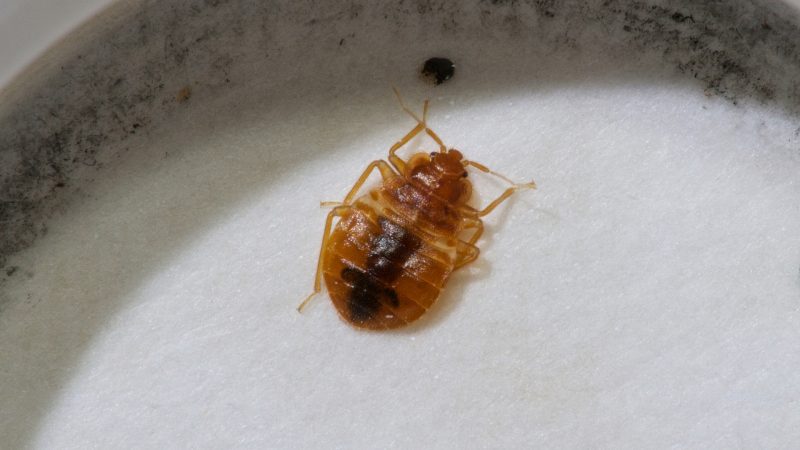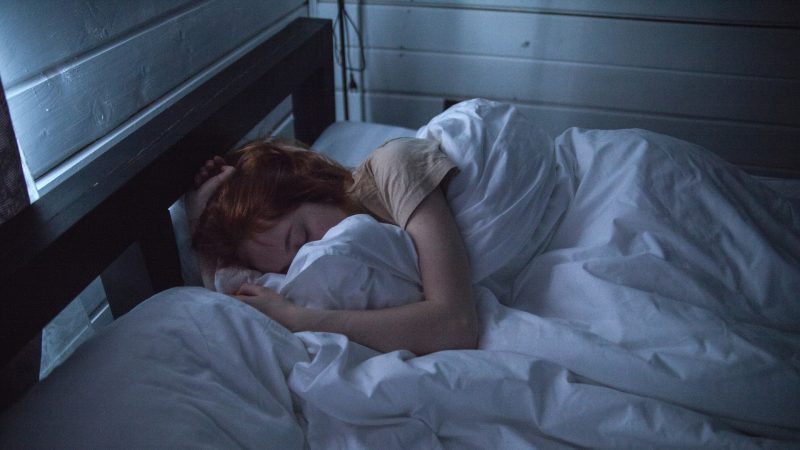People fear all kinds of bugs. However, people almost always seem to fear bed bugs the most. Most of that fear comes because they think of them as bugs that can’t be seen with the naked eye. Truth be told, there are tons of misconceptions about bed bugs and this is just a textbook example of one.
So, can you see bed bugs with the naked eye? Bed bugs can be seen with the naked eye, but they are rather good at hiding. As nocturnal creatures, these bugs hide throughout the day and mostly feed at night. This makes it challenging to see the insects, especially while they are actively feeding on you because you are presumably asleep at that time of day.
In this article, we’re going to talk about the visual factor of bed bugs, i.e. everything that includes their look, as well as their hiding places. If you have an ongoing bed bug infestation and this is your first time going through that, we suggest you stay with us until the end.
How Do Bed Bugs Look?
Given the large plethora of different bugs, it’s easy to misinterpret one type of bug with another. For example, some may say that bed bugs look similar to lice but in reality, these two are completely different.
Bed bugs don’t look that terrifying but since they walk in packs, you can easily get terrified when you see them. Plus, their tendency to drink the blood also seems quite frightening to some.

These are the visual characteristics of the bed bugs:
- The first visual characteristic of bed bugs is their pinhead size. The adult, male bed bugs are of the size of an apple seed, although the size can vary between the pinhead and an apple seed.
- Color-wise, it’s a combination of brown and red, with more brown than red. The best way to describe the color is to tell that it’s brown, although many will easily see the combination of these colors.
- Next, we have the shape, which is a number-one characteristic for recognizing them. They have an oval-shaped body that is sometimes elongated. The dimensions are roughly 5 millimeters, although it can be more or less.
- One interesting thing about their looks is their wings. Bed bugs have wings but can’t fly. Finally, we have the well-known musty smell that bed bugs leave due to their feces and feromones.
- Important to mention is that small bed bugs can’t be seen with the naked eye!
Where Do Bed Bugs Hide?
When not feeding, bed bugs take a rest in their shelter. The shelter is usually the bed, as their name implies. But given their ability to infest different spaces, bed bugs can hide almost anywhere.
When hiding in the bed, the usual spots are the bed construction and the mattress. When there’s a hole in your bed or the mattress, bed bugs won’t hesitate to infest it.
Furthermore, bed bugs can hide underneath carpets or in clothes. Holes in the walls can also be a perfect harborage for bed bugs, as walls are never disturbed or moved, giving them a peaceful space to rest.
Other places include wall hangings, under loose wallpapers, electrical appliances, chairs, folds of the curtains, etc. If you think you have no cracks in your mattress or walls, think again, because bed bugs need a crack the size of a credit card to get through.
Older beds and mattresses need to be inspected properly, while the cracks in the walls need to be filled. Wherever you find bed bugs in your house, you must know how to recognize them.
What Do Bedbug Bites Look Like?
If you can’t see bed bugs at particular spots in your house, you can indirectly see them by recognizing the bites on your body. For bed bugs, the whole purpose of an infestation is to be able to feed on your blood, so the bites are the first sign you’re going to notice.
Interestingly, bed bug bites look similar to bites from other insects, such as chiggers and mosquitos, and can trigger rashes such as fungal infections and eczema. Furthermore, some people don’t react to bed bug bites, so they can live with them, not having any idea of their presence until they see them, which is harder to do.
Some people said that 70% of people are resistant to bed bug bites but we find this theory wrong. The newer researchers say that it’s a matter of your reaction to bed bug’s saliva whether you’ll get symptoms of bites or not. Generally speaking, bed bug bites are treated by killing the infestation, rather than using medicaments. The main signs of bed bug bites include:
- Burning and itching
- Red, raised welts
- Bed bug bite rash on the localized area
- Straight lines indicating multiple bites
Where You Can See Bed Bug Bites on Your Body?
There’s no general rule for this. Whatever part of your body is the closest to the bed, that part will be used for blood extraction by bed bugs. This can be the neck, shoulders, arms, legs, stomach, and so forth.
Can You See the Bed Bug Signs?
You can see the bed bugs sign. Aside from seeing alive bed bugs, you can also see dead bed bugs as a sign of bed bug infestation. The most common infestation sign that can be seen is in the form of reddish or rusty stains on bed sheets or the surface of your mattress. This is because the bed bugs get crushed when you lay on your mattress.
Bed bugs often lay their excrement in the places they live in. Thus, you can see dark spots anywhere on your bed or the other infested things in your house.
The blood can also be seen and that blood is yours. After bed bugs finish drinking your blood, tiny blood stains might appear somewhere on your pillowcase or bedding, so you need to look for that.
Bed bugs are up to 5 millimeters large. However, their eggs are tiny, which is about 1 millimeter. These eggs are pale yellow, and this color is the color of their skin that they shed as they become larger.
Can You See Bed Bugs While They Are Eating?

You cannot see bed bugs while they are eating. Bed bugs will feed exclusively when you sleep or when you’re in a near-sleep state. They are strongly irritated by loudness and you moving around, and as such, they will always vacate the place if it’s not peaceful.
For example, if you move your bed very often for some reason, bed bugs will leave that place and infest some holes or cracks in your house. For that reason, seeing bed bugs feeding off your blood is impossible.
Bed bugs also feed relatively rarely – once per week or every ten days, although they can go without food for up to a whole year! On top of that, they almost always feed during the night because this is the time you are asleep.
The feeding process lasts for about 3 to 12 minutes. During this time, bed bugs use their straw-like ’mouth’ to extract the blood from your body. Despite this being a lasting process, not many people can see bed bugs while they are feeding. Even if you suddenly wake up, bed bugs are very fast and will disappear before you realize what’s happening.
List of Sources
Cimex lectularius Linnaeus (Bed Bugs), University of Florida
Brooks, S. E. (2021). Bed Bug, Cimex Lectularius Linneaus (Insecta: Hemiptera: Cimicidae). University of Florida, Institute of Food and Agricultural Sciences.
Diseases & Conditions – Bedbugs, Mayo Clinic
- How to Get Rid of Copperheads | Practical Guide - August 27, 2023
- How to Get Rid of Corn Snakes | What Makes Them Aggressive? - August 27, 2023
- How to Get Rid of Alligators | Safety Measures and Removal Methods - July 16, 2023
